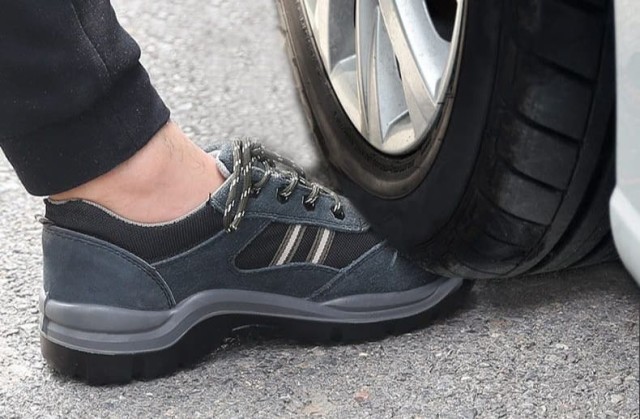Selecting the optimal safety toe material isn’t just about compliance—it’s about balancing protection, comfort, and job-specific demands. Whether you’re navigating heavy machinery, electrical hazards, or extreme temperatures, the right choice can enhance safety and reduce fatigue. Here’s how to match your needs to the best material.
Safety Toe vs. Steel Toe: Understanding the Basics
Key Differences in Material Composition
Safety toes come in three primary materials:
- Steel: The traditional choice, offering high impact resistance but heavier weight.
- Alloy (e.g., titanium/aluminum): Lighter than steel with comparable protection, though often at a higher cost.
- Composite (carbon fiber, Kevlar, etc.): Non-metallic, non-conductive, and lighter, but bulkier to meet safety standards.
ASTM Certification: What It Really Means
All safety toes must meet ASTM F2413 standards, which test for:
- Impact resistance (e.g., withstands a 75-lb object dropped from 1 foot).
- Compression resistance (e.g., handles 2,500 lbs of static pressure).
- Specialized ratings like EH (Electrical Hazard) for insulation against shocks up to 600V in dry conditions.
Comparing Safety Toe Materials
Steel Toe: Durability and Limitations
Best for: Construction, manufacturing, and heavy industries.
- Pros: Highest durability for repeated impacts; cost-effective.
- Cons: Conducts heat/cold; heavier (adds ~1–2 lbs per boot); not ideal for electrical work.
Composite Toes: Lightweight and Non-Conductive
Best for: Electrical work, extreme temperatures, or roles requiring mobility.
- Pros: Insulates against temperature and electricity; 30–50% lighter than steel.
- Cons: Less slim profile; may wear faster under constant heavy impacts.
Alloy and Hybrid Materials: Balancing Strength and Flexibility
Best for: Workers needing lightweight protection without sacrificing durability.
- Pros: Thinner design than composite; resists corrosion better than steel.
- Cons: Higher cost; less common in budget options.
Industry-Specific Recommendations
Construction and Heavy Machinery
- Priority: Maximum impact protection.
- Pick: Steel or alloy toes for durability against falling objects.
Electrical Work and Hazardous Environments
- Priority: Non-conductive materials.
- Pick: Composite toes (EH-rated) to prevent electrical conductivity.
Light Industrial and Warehouse Settings
- Priority: Comfort for long shifts.
- Pick: Composite or alloy toes to reduce fatigue.
How to Prioritize Your Needs
Weight vs. Protection Trade-offs
- Heavy-duty roles (e.g., welding): Tolerate extra weight for steel’s resilience.
- Mobile roles (e.g., warehouse picking): Opt for lightweight composites.
Compliance with OSHA and Industry Standards
- Check your workplace’s safety plan for specific requirements (e.g., EH ratings for electricians).
- Ensure boots display ASTM F2413 labels for verified protection.
Upgrade Your Safety Footwear with 3515
Whether you need steel toes for rugged durability or composite for electrical safety, 3515 delivers rigorously tested footwear tailored to your industry’s demands. Partner with us for bulk orders that combine compliance, comfort, and cutting-edge protection.
Have questions? Consult our team to match your workforce with the ideal safety toe solution.
Related Products
- Wholesale Durable Breathable Safety Boots Custom OEM Manufacturer
- Customizable Anti-Smash Safety Boots for Wholesale & Private Label Manufacturing
- Athletic Safety Shoes with Dial Closure & Steel Toe for Wholesale & Custom Manufacturing
- Wholesale Mesh Steel Toe Safety Shoes with Dial Closure Factory Production
- Safety Footwear Wholesale Manufacturer for Custom OEM/ODM Production
Related Articles
- How Safety Standards for Steel Toe Boots Protect Workers Beyond Impact Resistance
- How to Prevent Foot Discomfort Without Sacrificing Safety in Steel Toe Boots
- How Modern Steel Toe Boots Combine Safety with All-Day Comfort
- How Steel Toe Boots Combine Safety Compliance with All-Day Comfort
- Steel Toe Boots vs. Modern Alternatives: Making the Right Safety Choice



















